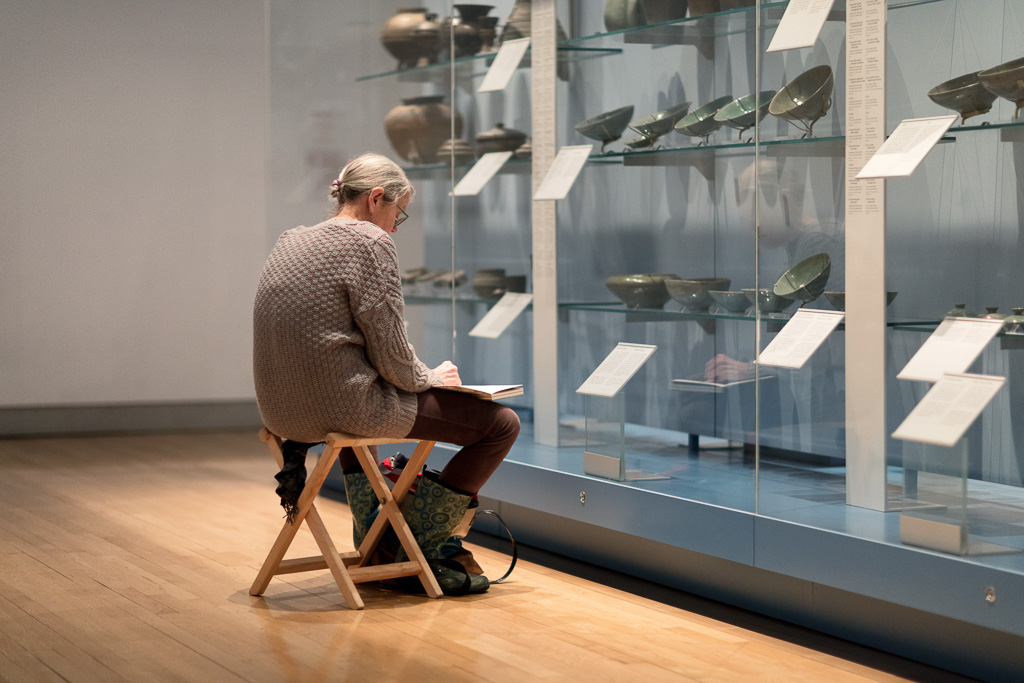While visiting the museum, I stumble upon an intimate scene: a woman sits on a stool sketching bowls in a display cabinet, her reflection faintly visible in the glass. I’m not sure why I call this an intimate scene. We tend to think of intimacy as something that happens in the way that one person relates to another. How can we speak in relational terms of someone who is alone? Still, the scene feels intimate.
Can an image be quiet? I feel a quietude settle over this scene. In this quietude all I hear is the drawing of breath and the faint scratchings of a pencil on the sketch pad. If I’m quiet enough, maybe I can hear the noise the photons make as they bounce off the glass cabinet. I’m afraid to move in case I betray my presence by shattering the quiet. I’ve noticed that my running shoes tend to squeak on the museum’s polished wooden floors.
There is something about this woman’s close looking that deserves to be repaid in kind. Does she see the clay bowl the way a 3D scanning algorithm sees a clay bowl, mapping enough points onto the surface to replicate its shape, then wrapping it in a textured surface that reproduces the bowl’s colour, opacity, and reflectivity? Or does she see it organically, a living thing with a breath of its own? Or does she see it with her heart, using her pencil to capture the way the bowl makes her feel?
Capturing this image, I place it in a museum of my own making. I import it into Adobe Lightroom where I can easily read the meta-data, date and time (April 17, 2018), along with technical details (1/250 sec at f/1.4, 85mm, ISO 1600). In addition, I give it a label and description, just like an artifact in a museum (“Woman sketches ancient pottery in Toronto’s Royal Ontario Museum”). I finish by assigning it keyword tags to make it more readily searchable on any platform where I share the image.
Like a bowl dug from the earth and exhibited in a museum, I pull my image out of its natural context, put it on display, and do my best to protect it from the ravages of time. The timeless quality of museum exhibits is a fantasy, of course. One day, a catastrophic event will shatter the bowl. It might be something dramatic, like an earthquake. More likely, it will be something banal, like a careless curator who trips while moving the bowl. But long before the bowl meets its end, my image (made to support my personal fantasy of timeless creation) will succumb to digital rot, or hard drive failure, or format deprecation or whatever the digital equivalent of an untimely demise.
For the time being, I invite you to pause to relish the quietude, acknowledging that soon enough it will be gone.
